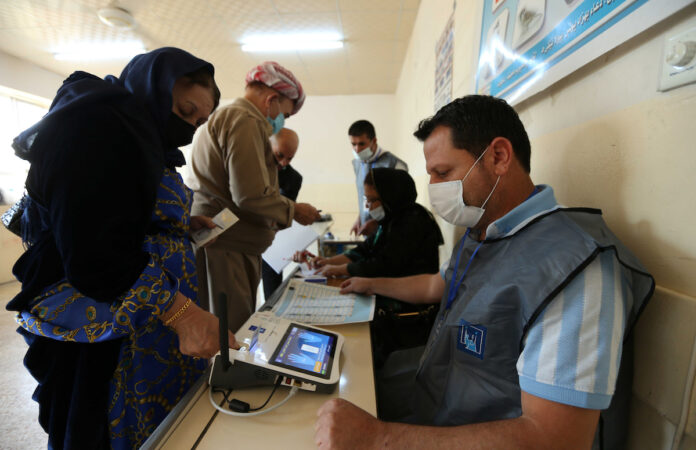Abdulaziz Aliwi Alissawi – Academic and researcher specializing in electoral affairs
Introduction
More than a year of the early elections in Iraq that took place on the tenth of October 2021, the Iraqis were divided over the one-inverted system under which those elections were held, Which relied on the division of the country on multiple electoral districts equal to the seats of women’s quota in the House of Representatives, which is (83) electoral districts, as its defenders believe that it enjoys an acceptable degree of transparency, especially after it gave emerging forces and independents an opportunity to reach the legislative authority, while opponents accuse it of causing the political crisis that hit the country for more than a year, which it creates obstacles to vote on the president of the republic and the formation of the government, In addition to the withdrawal of the Sadrist bloc from the parliament, and the ensuing tension at the popular and political levels, They continued until a political agreement was reached under which a president was chosen, and the new government headed by Mohammed Shia al-Sudani was voted on in October 2022.
The one-vote system finds itself in distress, as it is difficult to withstand major objections to its first test, and public demands to return Iraq to constituencies at the governorate level, but amending the electoral law may not be easy in light of the presence of political parties benefiting from the multiplicity of electoral districts. First: Multiple constituencies in the majority system
First: Multiple constituencies in the majority system
The majority election system cannot work without multiple electoral districts, because it will mean the existence of electoral districts with the number of members of the legislative authority, as one candidate wins from each electoral district, with some exceptions that include the existence of electoral districts in which more than one candidate wins, as is the case in the system of one variable vote, and one non-transferable vote, which we will explain later.
Multiple districts in a majority system can be applied in two ways: first, the election is held on a single round, as in Britain, or on two rounds, such as in the French election.
The British Kingdom is divided in the system of individual elections by the majority on electoral districts as much as the number of members to be elected to the parliament and voters in the electoral district elect only one person from among the candidates by a small majority, and therefore the voter votes only for one candidate, regardless of the number of candidates in the electoral district, and for this reason, the state is divided into small electoral districts, and thus this type of election does not allow prejudice to the freedom of the voter, leaving the voter free to choose the candidate he wants, based on his assessment of his sufficiency.
This type of election urges candidates and voters to focus, and not to be distracted which may lead to a waste of votes, and this ensures that the voter is more able to think about the most competent candidate than others, and this helps him to use his vote in a useful way, on the premise that his choice will be categorical and decisive, while at the same time ensuring that the candidate strives for the largest number of votes.
The one-role majority system helped to focus bipartisanship in Britain between the Labor and Conservative parties, as both parties are aware of the need to join their ranks and maintain their internal unity to face the electoral battle, which is only repeated every five years, and this helped to weaken the other parties, and for all this, the two parties have to adhere to tight regulations, foremost of which is discipline, compliance, and adherence to the party methodology.
France applies multiple constituencies in which the winner must be by an absolute majority, failing which there is a second round of elections in which the highest candidate wins.
This type of election is more expensive than the election by a small majority of the first round, but it is more in line with the reality of countries where there are many competing partisan political forces, which see the first round only as a way to estimate their forces, and the second round comes to push them to estimate their calculations and cohesion in order to win.











